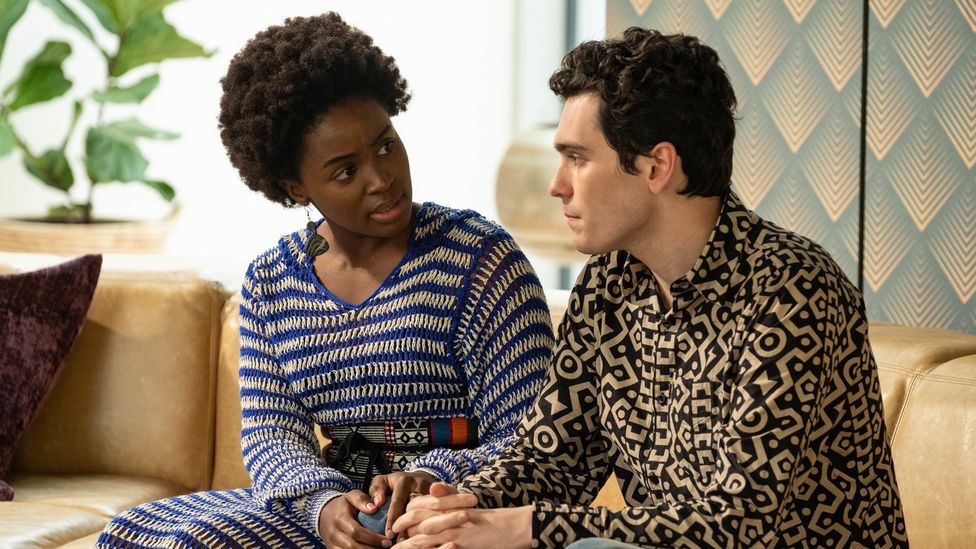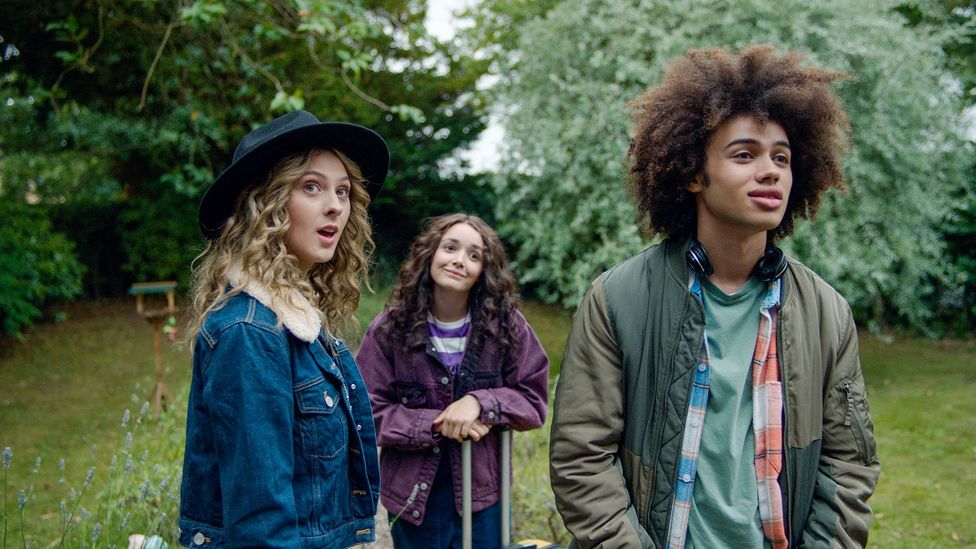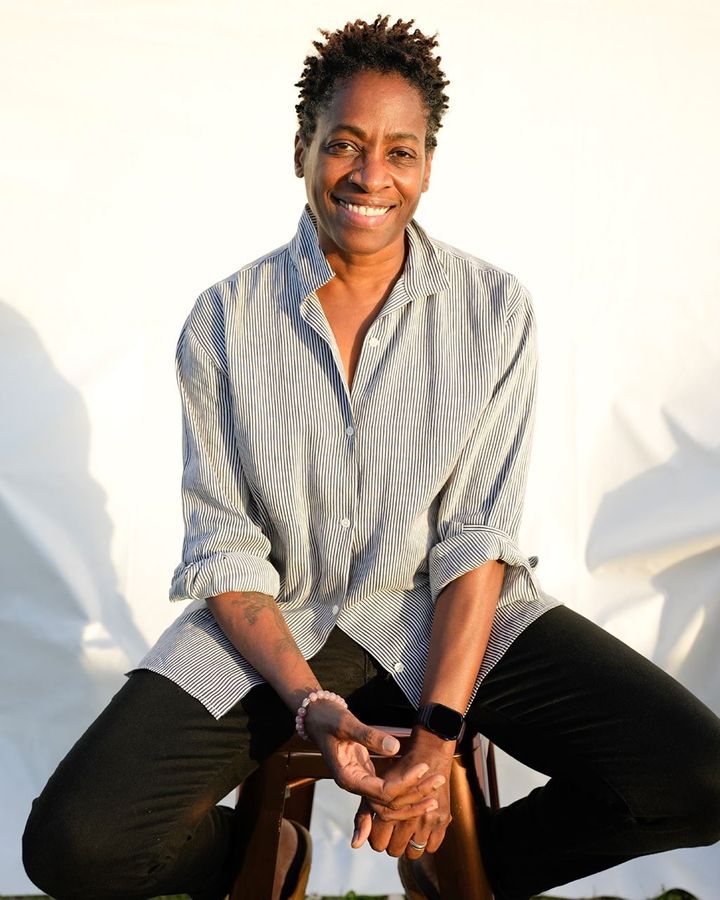Fourteen titles published this millennium made it into BBC Culture's 100 greatest children's books. Considered together, they reveal how storytelling for children is evolving in exciting ways, writes Hephzibah Anderson.
Good books not only shape us, they preserve within their pages aspects of who we were when we first encountered them. Nowhere is this nostalgic pull as tenacious as in books for children and young adults. Perhaps that's why, almost a quarter of a century into the millennium, BBC Culture's newly released list of the 100 greatest children's books is dominated by 20th-Century titles – in particular, books published in the 1960s and 70s and readily available to those born in the 1970s and 80s, the decades that happen to claim the largest number of respondents to the poll. No matter how brilliant a children's book may be, it's always going to find itself at a disadvantage when pitted against a story initially experienced in childhood.
Read more about BBC Culture's 100 greatest children's books:
- The 100 greatest children's books
- Why Where the Wild Things Are is the greatest children's book
- The 20 greatest children’s books
- Who voted?
And yet, titles published this millennium have battled through to claim their places on the list. Fourteen in all, these classics-in-the-making include picture books and speculative fiction, a "silent" graphic novel and a memoir in verse. Considered collectively, they highlight constants in storytelling for younger readers, as well as revealing something of the ways in which the literature is evolving, offering a glimpse of how the results of such a poll might look in decades to come.
We need more books that feature children of colour, children with mental and physical challenges, children from diverse backgrounds – Malorie Blackman
Some changes are long overdue. Malorie Blackman's Noughts and Crosses (2001), the first book in her eponymous YA series set in an alternative 21st-Century Britain, in which Crosses (dark-skinned people) are segregated from Noughts (lighter-skinned people), appears at number 40 in the list. Blackman was the UK's Children's Laureate from 2013 to 2015 but as she revealed in her recent memoir, Just Sayin', she only decided to channel her literary ambitions in that direction after scanning the shelves of a London bookshop for the diverse titles missing from her own childhood and failing to find them.

Malorie Blackman's YA series, that begins with Noughts and Crosses (2001), is set in an alternative 21st-Century Britain (Credit: BBC/Mammoth Screen/Ilze Kitshoff)
"Sad to say I have encountered children from various backgrounds who have told me that reading is not for them because they've never seen characters like themselves in fiction books. We need more books that feature children of colour, children with mental and physical challenges, children from diverse backgrounds," she tells BBC Culture, adding that that inclusivity has to extend to the heritage of those who are doing the storytelling as well.
"What needs to be encouraged is a wide range of stories available to all our children so that they can develop and stretch their empathetic muscles. That way all our children grow knowing that stories about other people who may not share their background or heritage are still theirs to enjoy and share."
'Writing the antidote'
Books helping to do just that are prominent among the 21st-Century titles on our list. For instance, Sharon M Draper was inspired by her daughter when she created a heroine with cerebral palsy in her extraordinary middle-grade novel Out of My Mind (2010). Jessica Love's picture book Julián is a Mermaid (2018) is a vibrant, witty celebration of tolerance, following a child who dresses up as a mermaid after seeing three fabulously costumed women on a subway ride with his grandmother. And in Elle McNicoll's A Kind of Spark, 11-year-old Addie, who is autistic, campaigns for a memorial to commemorate the victims of historic witch trials that took place in her Scottish hometown.
Negative representation, where disabled characters are always evil or objects of hate or pity – that was not pleasant to read. I wanted an antidote. So I wrote the antidote – Elle McNicoll
Published in 2020, A Kind of Spark is the newest title to feature. McNicoll wrote it while working on a dissertation about the lack of autistic voices – female voices especially – in children's publishing. "The first proper draft of A Kind of Spark was written in two days. It poured out," she tells BBC Culture. Ironically, she's now regularly sent books billed as "the next A Kind of Spark" – sometimes from the very publishers who turned her own book down, insisting that neurodiversity would never sell.

In Elle McNicoll's A Kind of Spark, autistic heroine Addie campaigns to commemorate the victims of historic witch trials in her hometown (Credit: BBC9 Story Media Group)
As a reader destined to grow up and become a writer, the lack of representation McNicoll encountered as a child didn't put her off books. "I suppose, upon reflection, I didn't mind the lack of representation, I found joy in other stories," she says. "But negative representation, where disabled characters are always evil or objects of hate or pity – that was not pleasant to read. I wanted an antidote. So I wrote the antidote."
In doing so, she looked for inspiration to works she loved in childhood, among them books by Jacqueline Wilson and LM Montgomery's Anne of Green Gables. "I wanted to write an autistic Anne Shirley," she says, noting that some within the autistic community argue that Anne was in fact neurodivergent.
It's an interesting idea, and suggests that today's children's and YA writing isn't just in dialogue with books from the past, it also holds the potential to make us look at those books anew. Take Kate DiCamillo's exquisitely illustrated book, The Miraculous Journey of Edward Tulane (2006), number 68 on the list. Tracking a dapper but proud china rabbit's voyage of self-discovery, it riffs with a big themes like loss and compassion. It also recalls Hans Christian Andersen's The Steadfast Tin Soldier, highlighting the almost sadistic lengths to which the story goes in order to improve the toy's character.
Arguably, darkness has always been integral to children's literature but despite the rise of trigger warnings and safe spaces, our appreciation of its role has radically altered in recent years – even when it comes to picture books. Just look at Australian Shaun Tan's The Arrival (2006), the list's highest-ranking 21st-Century title, at number 16. An entirely wordless story, its mystery-infused images and moody, muted palette offer a vision of the immigrant experience (his father is Chinese) that shares some of the enigmatically ominous atmosphere of another of Tan's books to make the list at number 42, Rules of Summer (2013).
The Arrival was greeted with aptly effusive wonderment – in stark contrast to the uproar that was met by another picture book and the poll's overall winner, Where the Wild Things Are, when it was first published some four decades earlier. Maurice Sendak's masterpiece was even denounced by famed child psychologist Bruno Bettelheim as being too frightening for children. You could argue that The Arrival is clearly aimed at older children (an interesting development in itself for a book without words), but what would Bettelheim have made of two other picture books on our list, both definitely pitched to a younger audience: Wolf Erlbruch's Duck, Death and the Tulip (2007), in which death is indeed a character, and Jon Klassen's I Want My Hat Back (2011), a bleak philosophical gem disguised as an animal-filled parable about stealing?
Benefits for all ages
A less contentious ingredient that shows no sign of losing its hold over children's literature is magic. As McNicoll muses, "Magic gives children a chance at power and control. The impossible becoming reachable can be this wonderfully escapist shot at freedom when you're trapped in school." Or simply at the mercy of adult whims. Magic features in another 21st-Century title on our list, The Graveyard Book (2008) by that magician of YA fiction, Neil Gaiman. It tells the story of Nobody "Bod" Owens who is adopted and reared by the spectral occupants of a graveyard after the brutal slaying of his family.
Displacement in its endless iterations provides the catalyst for some of children's literature's all-time greatest stories and in an uncertain world, contemporary writers are just as alert to its possibilities. Gene Luen Yang's 2006 book American Born Chinese, just squeezing onto the list at number 99, describes a boy adapting to being the only Chinese American student at his school after his family moves to a new neighbourhood. At the book's heart is a theme that laurelled author Jacqueline Woodson sees as being a timeless aspect of the best children's writing: belonging, the flipside of displacement.
So often, people said 'I don't know you and our lives are very different but you're telling some part of my story here' – Jacqueline Woodson
Woodson's YA memoir in verse, Brown Girl Dreaming, is number 29 on the list. As a queer black girl growing up in 1960s and 70s America, protagonists Woodson felt able to relate to were hard to find, but like Blackman and McNicoll, that lack helped nudge her towards writing. "It definitely made me want to fill that hole and question why my experiences weren't on the pages of the books I read," she tells BBC Culture.
Much about children's and YA publishing has changed in the decades since she debuted, she says, but what she finds more exciting is the way young people themselves have changed. "Their voices are louder, their sense of self is greater, they often are very clear-eyed about their impact on a greater good – I like to think some of this has come from the books they've read."
In a plot twist that should delight every lover of good literature, the best books being published for younger readers today aren't just out to benefit all kinds of children. While that task, as Blackman urgently reminds us, remains far from complete, post-Harry Potter it's become much more acceptable for adult readers to pick up books pitched at the YA market or for kids.

Jacqueline Woodson's memoir in verse, Brown Girl Dreaming (2014), is number 29 on the list (Credit: Jireh Deng)
They certainly reached for Brown Girl Dreaming. Woodson admits to having been stunned by the breadth of readers who got in touch after its publication in 2014. As she recalls, "I got letters from girls in India and white boys in the [American] South. I got letters from 60-year-old white men my grandfather had coached when they were boys playing baseball. Letters came in from women of all colours my age, and black and white girls as young as nine. So often, people said 'I don't know you and our lives are very different but you're telling some part of my story here'."
McNicoll, too, has found her fan mail enlightening, coming as it does from readers of all ages. "Schoolchildren write to me to say they love it. Adults have said they understand things more clearly. Doctors have told me their patients bring it with them, and a prison librarian told me a prisoner stole their library copy to hide it in their cell for comfort after checking it out to read over and over. That, I will never forget."
The notion that children's literature should truly be for everyone, regardless even of age, feels very of-the-moment in its boundaryless fluidity, yet it harks back to the past and a time when there was no such category as children's writing. Consider Aesop's Fables, among the oldest works on BBC Culture's list: long popular with children, they were never actually intended for them.

